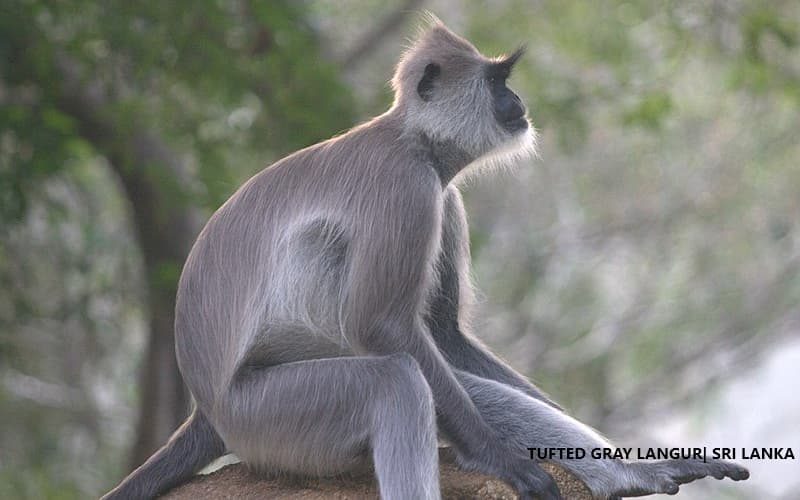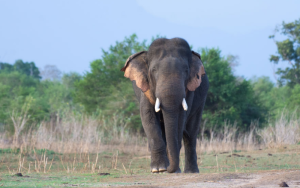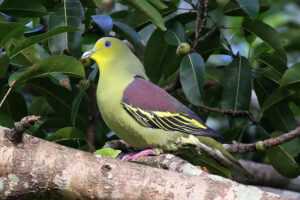About Tufted Gray Langur
Tufted Gray Langur is divided into two subspecies: Semnopithecus priam priam, which lives in India, and Semnopithecus priam thersites, which lives in Sri Lanka.
When it comes to the evolution of these two subspecies, there are two competing theories. Some believe that Semnopithecus priam descended from the subspecies Semnopithecus vetulus philbricki, which is the ancestor of the species. With the glacial fluctuations and the separation of the Indian subcontinent, two taxa were separated, but both kept crucial adaptations to folivory and a stomach similar to that of a ruminant. Following that, S. priam invaded India, where it crossed a land bridge, and divided into two subspecies of S. priam, which are now extinct. According to the other theory, the Sri Lankan subspecies S. priam thersites evolved from the endemic S. vetulus, whereas the Indian subspecies S. priam priam evolved from the S. johnii, resulting in genetic differences between the two S. priam subspecies. The genetic differences between the two S. priam subspecies are a result of the genetic differences between the two S. priam subspecies.
Physical Characteristics of Tufted Gray Langur
The distance between the head and the body is between 55 and 80 cm (22 to 31 in)
Tail length ranges from 75 to 90 centimeters (30 to 35 in)
An adult’s weight ranges between 11 and 20 kg (24 to 44 lb)
Males are significantly larger than females.
The average adult weighs 12.8 kg (28 lb) and measures 61.1 cm from the top of the head to the bottom of the body (24.1 in).
It is estimated that the Indian subspecies have a somewhat larger body than the Sri Lankan subspecies, which normally weigh between 6.8 and 13.4 kg (15 and 30 lb).
Despite its slightly smaller size in Sri Lanka, the tufted gray langur is the largest native primate on the island, according to average body size measurements.
The dorsal portion of the Sri Lankan subspecies is gray to brownish gray in hue, with the color becoming deeper with age. The underparts of the bird are a pale grayish color. There is a short beige beard and sideburns on display. It gets its name because the hairs on the crown form a characteristic pointed tuft or crest that joins at a central point, hence the name. The brows are black and protrude outward. The head is only somewhat paler or not paler than the back. Hands and feet are the same hues as the rest of the body.
Habitat
Tufted gray langurs can be found in large numbers in Sri Lanka’s dry zone woods, as well as in and around human settlements. Many thousands of troops can be found at archaeologically significant areas like as Polonnaruwa, Dambulla, Anuradhapura, and Sigiriya, among others. Hambantota, Yala National Park, and Tissamaharama are among the locations where the animal can be found in the southern part of the island.
Ecology
In spite of being a shy creatures, tufted gray langurs are semi-adventurous, semi-terrestrial, and diurnal in their habits. When there is no risk, they always find a way to descend to the earth. However, in contrast to their sympatric relatives that dwell the canopy, they are more prevalent in urban populations, where they can be found in gardens and among other huge fruit trees like as Mangifera indica and Artocarpus heterophyllus.
Diet
Tufted gray langurs are mostly folivorous, however, they enjoy a variety of vegetarian foods. They have been observed to consume fruits and seeds. Langurs differ from leaf monkeys in that the latter are known to eat mature, fleshy fruits, whereas langurs are known to eat fibrous fruits that are partially dried and brittle. Sri Lankan subspecies are reported to consume the leaves of Drypetes sepiaria, Dimocarpus longan, Ficus microcarpa, Holoptelea integrifolia, as well as the fruits and seeds of Hydnocarpus venenata, Ficus arnottiana, and Macaranga peltata, among other plants.
Sometimes, the troops can be seen near the water bodies, where they feed on Nelumbo nucifera seeds. Insects and everygreen leaves are consumed when others meals are less abundant and bark is only eaten when there is no other food available. The Gray Langur’s diet is heavy in strychnine, which can be detrimental to animals. Therefore, it will commonly ingest the gum of the Sterculia urens to counteract the effects. This gum is marketed in England as a prescription laxative known as Normacol.
Predators
Leopards and black eagles are the primary predators of tufted gray langurs, with black eagles being the most dangerous. Aside from them, siblings and subadults are occasionally attacked by tigers, dholes, gray wolves, mugger crocodiles, and Indian rock pythons, among other predatory animals.
Behavior
Tufted gray langurs are primarily philopatric, which means that they tend to stay within their own territory. A single unit may consist of anywhere from 20 to 50 individuals. When it comes to huge forces, massive male-female combinations are used to lead them, whereas tiny soldiers are commanded by an alpha male. In contrast to the natural estrous cycle, females swiftly reach their heat and mate with a new alpha male, even if they are not ready for reproduction at that time.
After 6 months of gestation, a female langur gives birth to a single kid or, in rare cases, twins, depending on the circumstances. After delivery, the baby remains attached to the mother for around three months, receiving all of the necessary nutrition and other care. Typically, subadult males and other males occupy their time with activities like as looking for food, competing with nearby alpha males, and protecting the flock. Females spend their time caring for their young, feeding them, combing them, and even playing with them.
Tufted gray langurs communicate in a variety of ways, including barks, grunts, whoops, whistles, and howls, among other things. The coughing voice is intended to create stress, and the whistling voice is meant to indicate a loss of contact with the group. Because of the tufted gray langur monkey’s excellent eyesight and ability to sit on the branches of tall trees, it can easily identify predators. It has been observed by researchers that this species will frequently perch adjacent to herds of spotted deer, alerting them when a predator is coming. Furthermore, the langur will frequently drop fruit from lofty trees, which the Spotted Deer would then consume. Meanwhile, the Spotted Deer’s keen sense of smell allows it to identify predators early on and warn the langur when something is in the vicinity of its burrow.
Tufted gray langur monkeys communicate in a variety of ways, including barks, grunts, whoops, whistles, and howls. When it comes to huge forces, massive male-female combinations are used to lead them, whereas tiny soldiers are commanded by an alpha male. In contrast to the natural estrous cycle, females swiftly reach their heat and mate with a new alpha male, even if they are not ready for reproduction at that time. Researchers have observed that this species will frequently perch adjacent to herds of spotted deer, alerting them when a predator is coming. Meanwhile, the Spotted Deer’s keen sense of smell allows it to identify predators early on and warn the langur when something is in the vicinity of its burrow.
Conservation
The tufted gray langur is designated as a “Near Threatened” species on the International Union for Conservation of Nature’s Red List, due to a drop in population numbers in recent years. Hunting and habitat damage are also contributing factors to the extinction of the species. In some places of Sri Lanka, people are also fond of eating langur flesh, which is a delicacy. There have only been a handful of documented instances of people being apprehended for their dogs. A large number of conservation projects are being carried out in Sri Lankan and Indian forests and wildlife sanctuaries.
Both thersites and priam are considered “Near Threatened” species by the International Union for Conservation of Nature.
Image Credit: Featured
Source: en.wikipedia.org
Where to Stay
For those planning a trip to Sri Lanka, we recommend booking your accommodations through our partner ” Booking.com,” which allows us to earn a portion of the revenue generated by the creation of high-quality content like this. Keep an eye out for our newest post on “National Parks,” which will be published weekly. Even if you are unwilling to do so, you can still enjoy the article and learn something you may not have known before.











